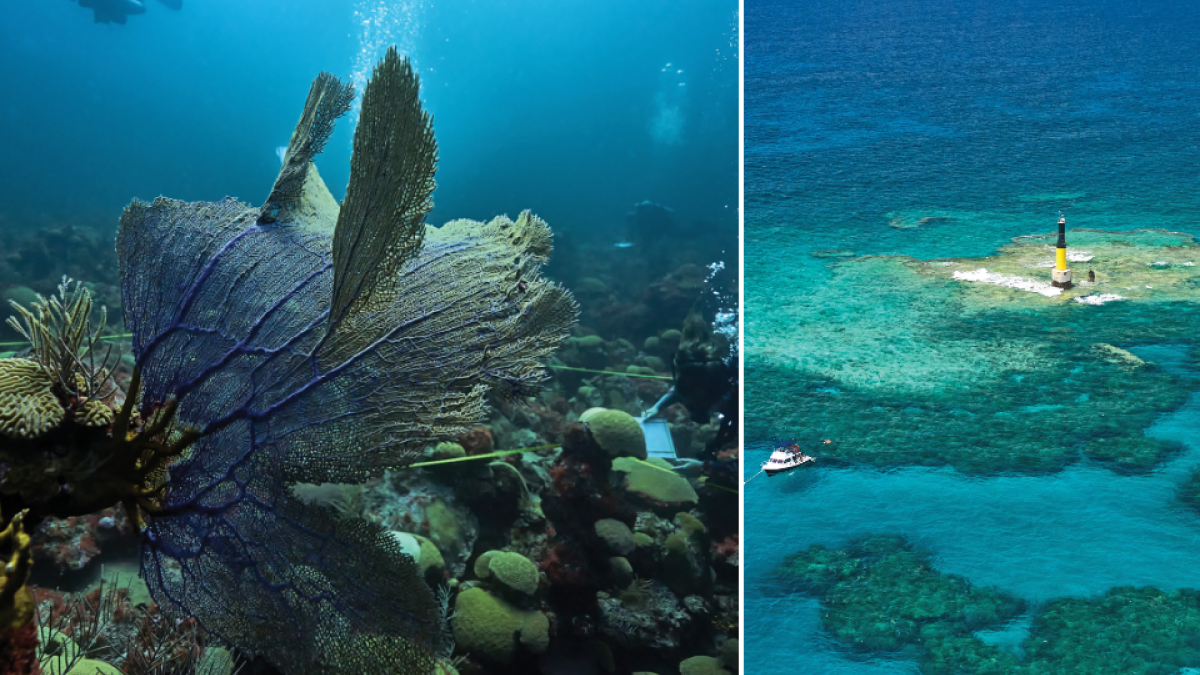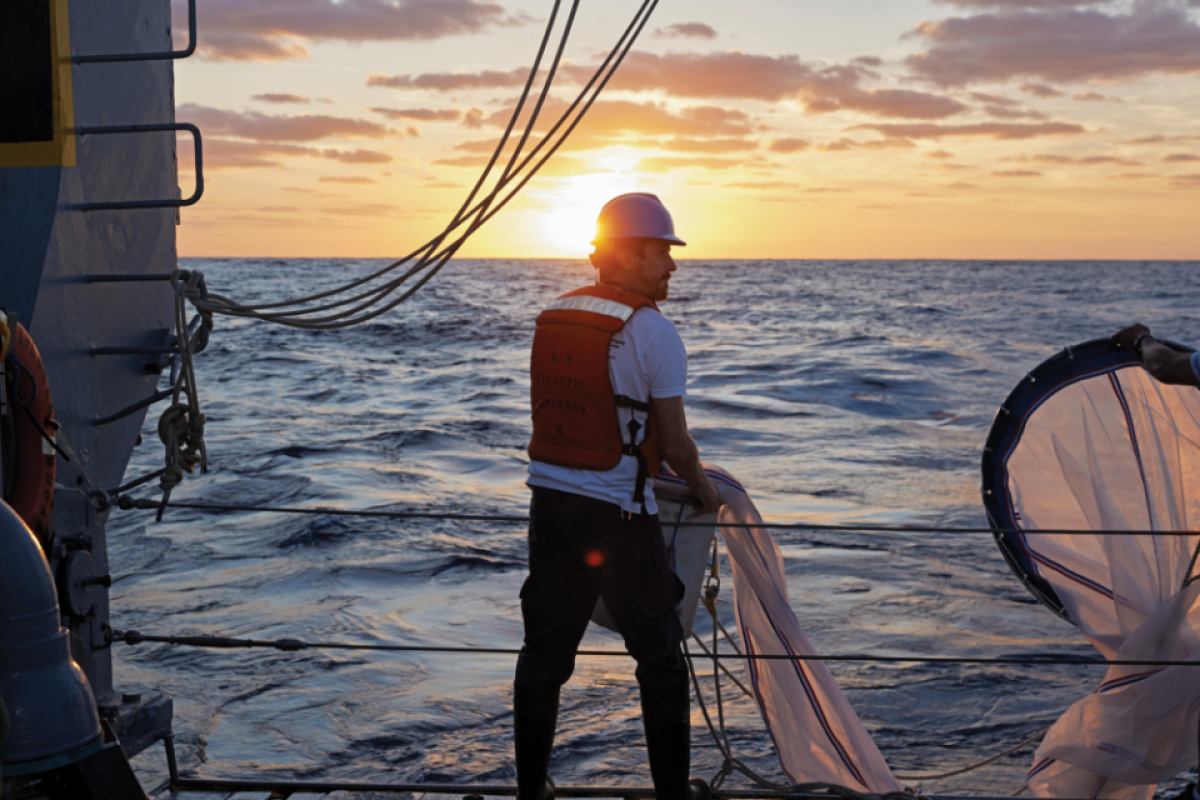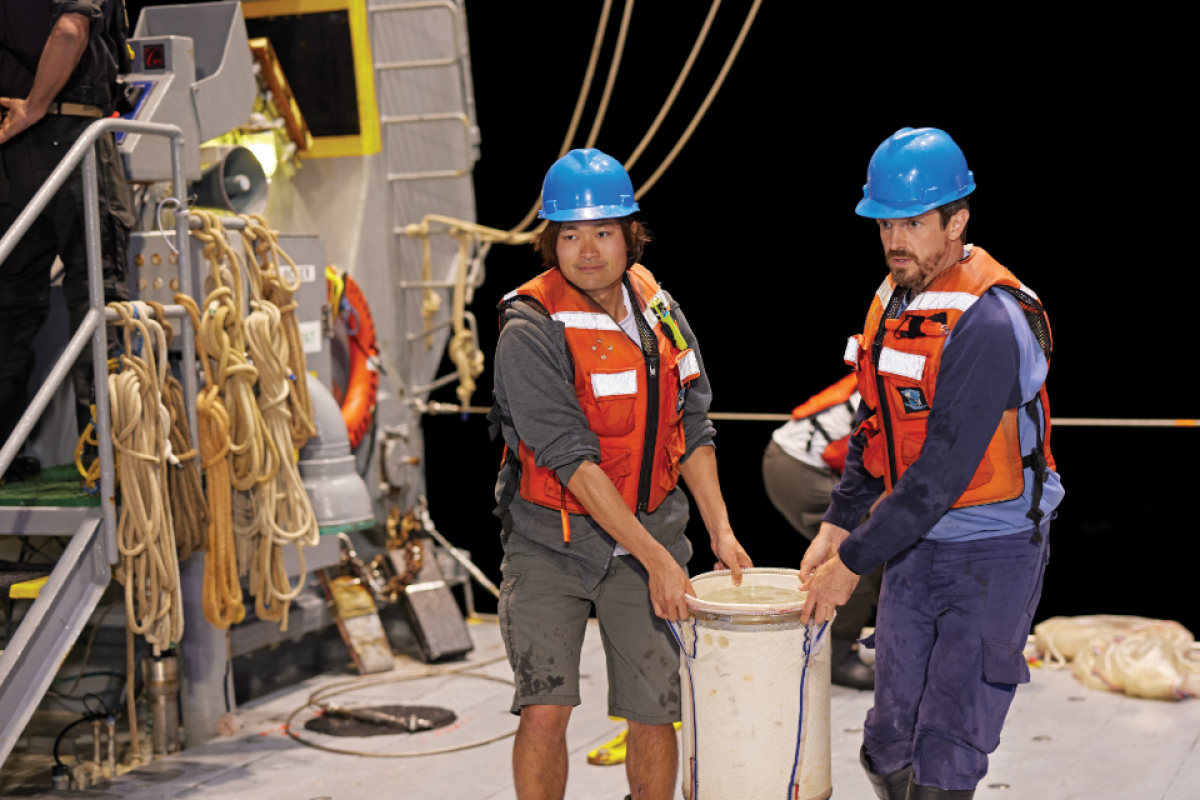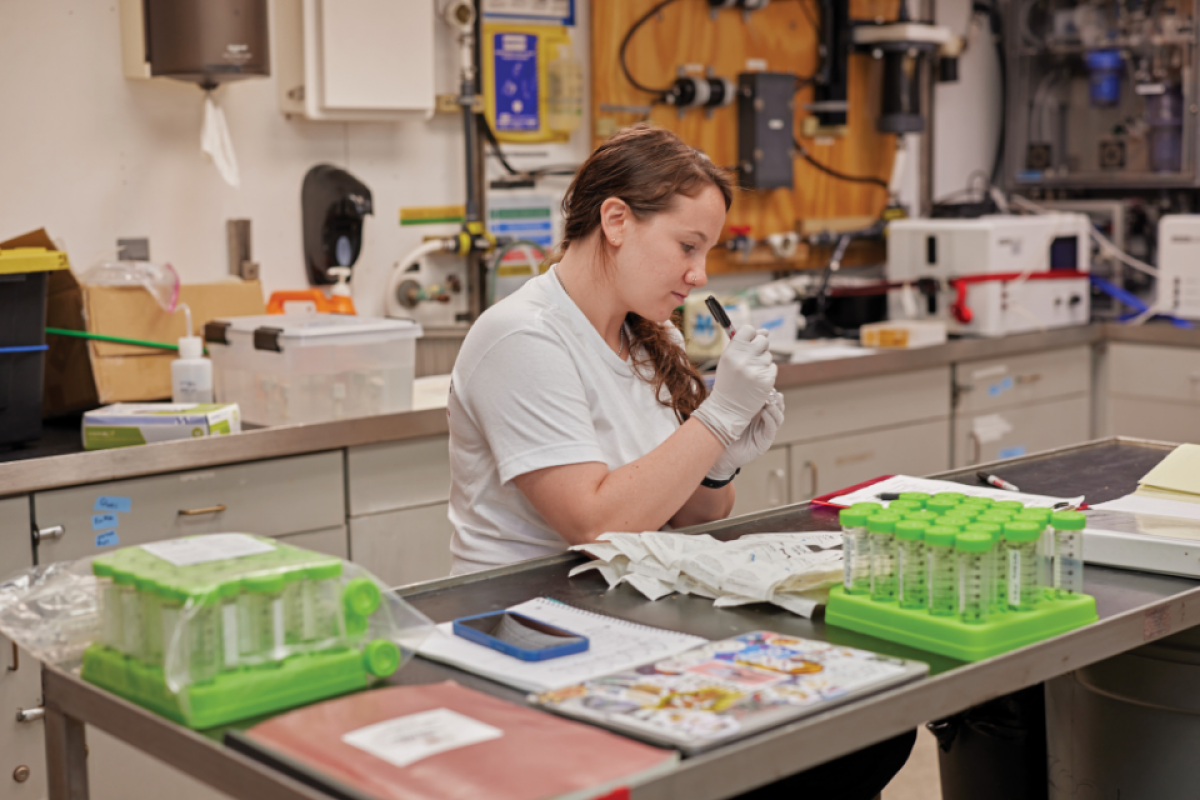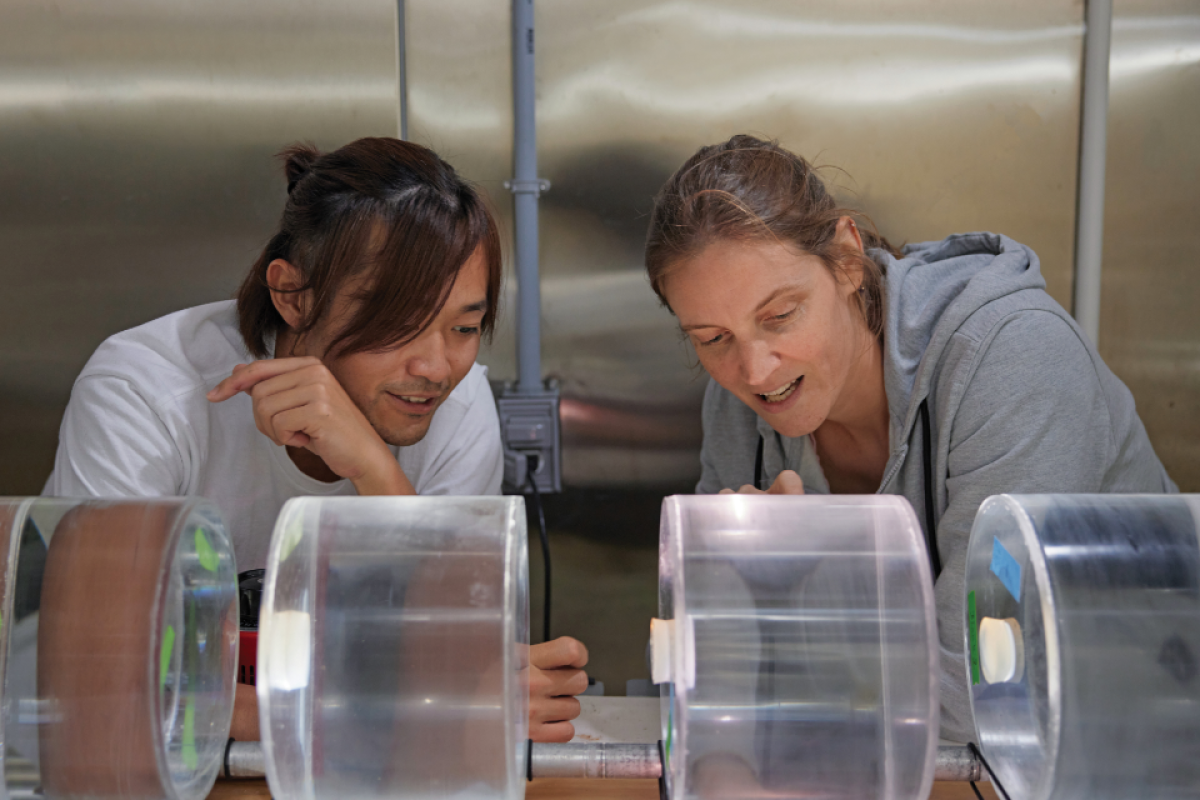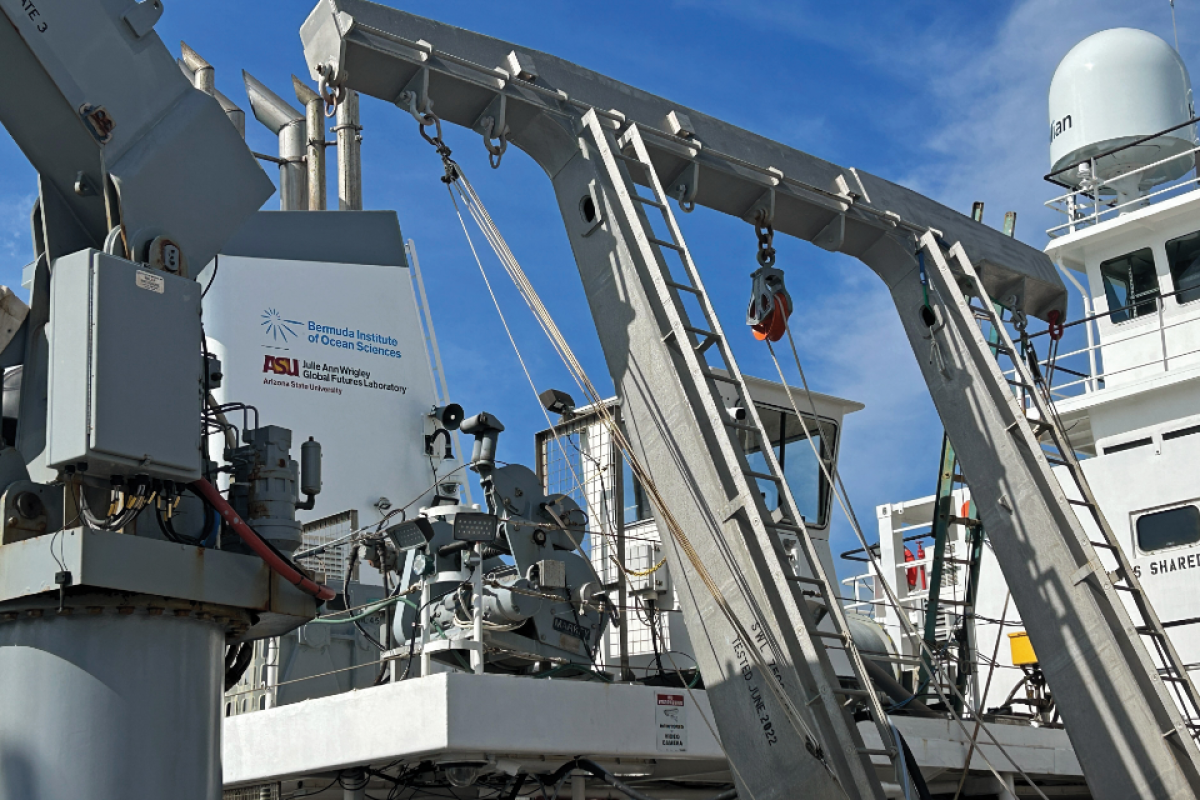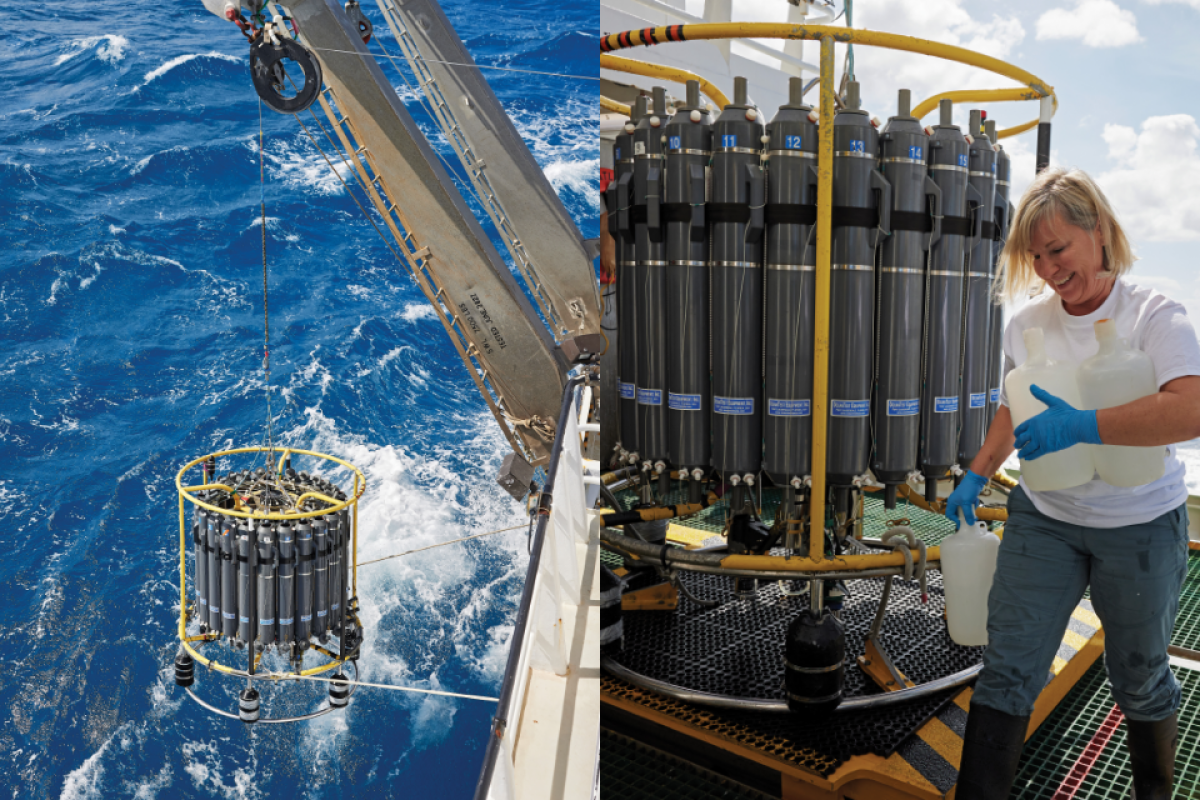Editor's note: This story originally appeared in the fall 2023 issue of ASU Thrive magazine.
In the clear blue waters of the Sargasso Sea swim all sorts of marine life: eels, white marlin and whale sharks; turtles, manta rays and even humpback whales. The sea, a region in the Atlantic Ocean that encompasses the Bermuda islands, is a hotbed of biodiversity.
But on the back of the Atlantic Explorer — a 170-foot-long research vessel owned and operated by the Bermuda Institute of Ocean Sciences, a unit of the Julie Ann Wrigley Global Futures Laboratory at ASU — second-year PhD student Yuuki Niimi hopes to catch much smaller creatures: zooplankton.
It’s the middle of the night because that’s when zooplankton swim from the ocean’s depths to the water’s surface to feed on phytoplankton. But it’s not completely pitch-black; there are lights on the ship and flashing green strobe lights on the nets being towed in the water, which temporarily blind the zooplankton, making them easier to catch.
It can be a bit scary, Niimi admits: The back of the ship, where the mechanism to lower the nets into the water sits, can flood with seawater. The nets are heavy. The boat shakes. But it’s worth it once he and his fellow researchers pull up a net to see a new world.
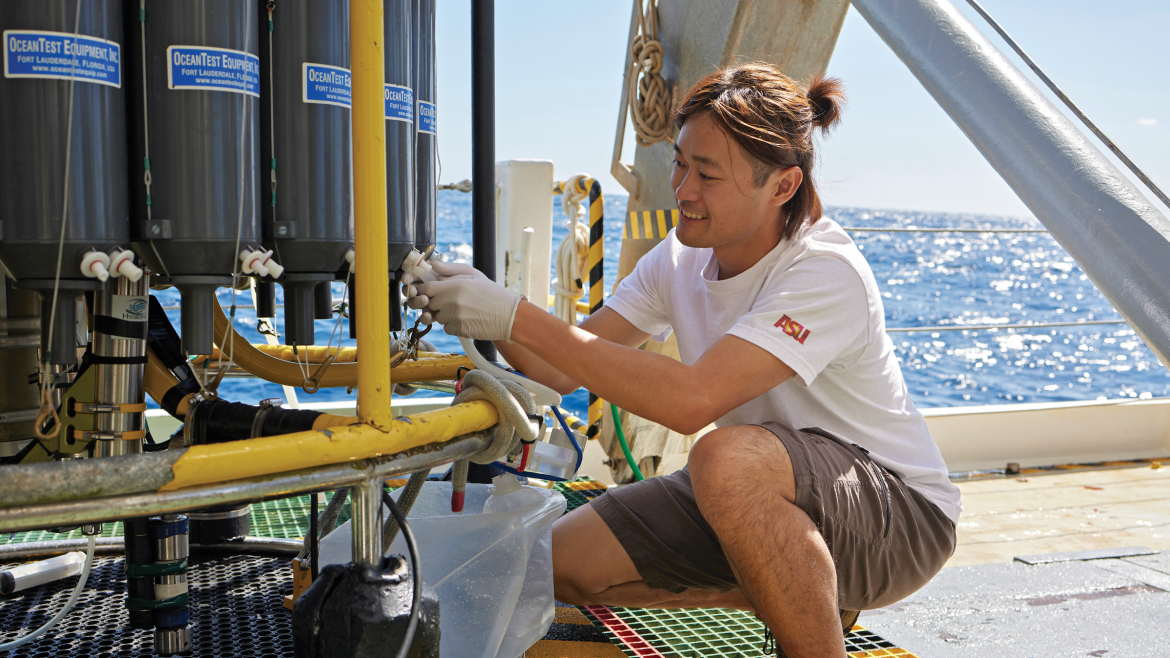
Second-year PhD student Yuuki Niimi studying in Bermuda.
“The first time you bring up a net, everybody’s like, ‘What is that? That’s so weird!’” says Amy Maas, an assistant professor in the School of Ocean Futures and an ASU BIOS faculty member, who has been on research cruises with Niimi.
“It looks like a busy city, but in three dimensions, or like a galaxy spinning around. You’ve got all these different shaped things — and none are shaped like us; they’ve got too many legs or no legs at all — and they’re zooming around in this bucket,” Maas says.
On his first research cruise, in July 2021, Niimi remembers Maas and Leocadio Blanco-Bercial — another ASU BIOS researcher and assistant professor in the School of Ocean Futures — easily identifying the different zooplankton.
But he was confused: Was that thing zooming around in the net a krill or a shrimp? The two can look similar, but krill, zooplankton also called euphausiids, have exposed gills, though you need a microscope to see that. Eventually, after multiple research trips and nights spent studying in the ship’s lab, Niimi became adept at identifying krill and pteropods.
“I can just look at it with my naked eye and say, ‘That’s this genus,’ or ‘That’s this species,’” he says.
What were once just “specks of dust” were now distinct creatures — each playing an essential role in the ocean’s overall health.
The importance of plankton
Zooplankton are tiny organisms that range from a fraction of a millimeter to centimeters in length and take a variety of shapes. Krill look like tiny shrimp; copepod can resemble insects, with a pair of antenna atop their teardrop-shaped bodies; and pteropods, planktonic marine snail, are called “sea butterflies” because their foot resembles two wings. Then there’s phytoplankton, the microscopic algae that zooplankton feed on and which photosynthesize in the top layers of the ocean.
Though they might be small, the role plankton play is enormous.
“Zooplankton are the most abundant animals on Earth, by far, and they are sustaining all the trophic webs in the oceans,” Blanco-Bercial says.
They’re also the first step in the biological carbon pump, the crucial ocean system that sequesters carbon out of the atmosphere and stores it in the deep ocean.
We need to know the crucial roles of these different zooplankton so that we know, as the ocean is changing, how the biological carbon pump may be changing.
Susanne Neuer, founding director of the School of Ocean Futures
The pump works like this: First, phytoplankton capture carbon dioxide through photosynthesis.
“Think of the equivalent of grass on land. That’s what phytoplankton are in the ocean,” says Susanne Neuer, founding director of the School of Ocean Futures and a professor in ocean biogeochemistry and one of Niimi’s advisors.
Then, the phytoplankton die and begin to sink, or they get eaten by zooplankton, which excrete fecal pellets containing organic carbon that sink even deeper. Those zooplankton die or get eaten by bigger predators themselves — and sink. As the organic carbon sinks and sinks, it gets stored for longer and longer. It can stay sequestered for up to 1,000 years if it reaches the deep ocean.
What Niimi, Neuer and others are trying to figure out is what zooplankton are out there, where they are going, how much they’re excreting and how much carbon or other nutrients are in all those sinking particles. After they collect the zooplankton, one experiment involves putting them in beakers and seeing just how many fecal pellets they produce and what’s in them. Understanding their vital roles in the carbon cycle is part of a puzzle.
The oceans take up about a quarter to a third of all our emissions through this carbon pump. Without it, we would have already surpassed the 1.5 degree Celsius target from the Paris climate agreement, Neuer says.
“The ocean is buying us time,” Neuer says. And that time is thanks to plankton.
But while the ocean helps stem climate change, it’s being affected by it. The researchers are studying the biological carbon pump because the seas are changing, already getting warmer and more acidic.
“We need to know the crucial roles of these different zooplankton so that we know, as the ocean is changing, how the biological carbon pump may be changing,” Neuer says, who is the principal investigator in the project.
Partnering for the oceans
Neuer started working with scientists at ASU BIOS about 15 years ago. ASU BIOS itself has been doing oceanography work for 120 years. U.S. scientists first visited it in 1903, and it has run long-term studies for years — like its Bermuda Atlantic Time-series Study, which has collected data on the ocean’s physical, biological and chemical properties through cruises out to sea every month since 1988. As Neuer and Niimi have done, other researchers can access that trove of historical data and piggyback onto those cruises for their work.
“That saves a lot of time, money and headaches, to know that those data exist,” Blanco-Bercial says, “and then you can focus on the question you want to answer.”
In 2021, ASU and BIOS joined forces, turning the Bermuda institution into a center for the Julie Ann Wrigley Global Futures Laboratory, alongside ASU’s Center for Global Discovery and Conservation Science in Hawaii.
“The merger between BIOS and ASU opens up ocean sciences for ASU students,” Neuer says, including opportunities for field experience and the chance to work with the faculty in Bermuda.
Andrea Brenner, a first-year PhD student in Neuer’s group who went on a research cruise with Niimi in the summer of 2022, and again in March 2023, has experienced the partnership’s benefit firsthand.
“I remember being on the ship and watching (Maas and Blanco-Bercial) empty the buckets attached to these nets, collecting these teeny tiny little things,” she says of her first cruise.
She watched them pick out these organisms without knowing what they were herself, learning on the go. But then, in their first class, Maas and Blanco-Bercial had more time to explain the types of plankton species and how they differ.
“It was very cool to see how I saw these species on a ship a couple of weeks ago, and now I’m learning about them in a classroom,” Brenner says.
ASU BIOS faculty are also aware of the difference having that connection to ASU’s campus can make. To William Curry, ASU BIOS president and CEO, bringing the ocean to ASU students, particularly through its online and hybrid programs, was a huge appeal.
“The online aspect and the flexibility of that kind of educational programming are really important when you’re on this little rock out in the middle of the North Atlantic,” Curry says.
Looking ahead
Oceans cover over 70% of our planet. Their health irrevocably intertwines with Earth’s health. There’s much work to do to better understand the oceans and how climate change affects them.
One priority Curry has for ASU BIOS, in addition to the already extensive plankton research and its decades-long time series research projects, is to increase its robotics operations. The institution already uses underwater gliders that take measurements using sensors, moving up and down the water column (and yes, sometimes they bump into marine life, even getting bitten by sharks). ASU BIOS has used these since 2014 to monitor the delivery of nutrients to the surface of the ocean,
One important discovery is the observation of a significant spring increase in turbulence caused by marine organisms, which increases nutrient delivery and biological productivity. Curry says it’s time to expand on taking more of the ocean’s vital signs with additional robotics.
“The future of observing the oceans is in autonomous robotics and sensor systems to provide continuous observations of important biogeochemical processes over broad areas of the oceans, something that cannot be achieved by the few numbers of ships in the research fleet,” he says.
Beyond learning about the ocean, ASU also has the opportunity to help protect it — and our planet.
The Global Futures Laboratory focuses not just on research and education, Curry says, but on solutions. “(They’re) trying to figure out not just what will higher CO2 do to the planet, but how can we affect it or stop it or mitigate it better?”
Some answers, at least, likely lie underwater.
Watch videos and find out more at collegeofglobalfutures.asu.edu/school-of-ocean-futures
Story by Kristin Toussaint, the staff editor of the Impact section at Fast Company; she was previously a senior news reporter at Metro in New York City.
Photos by James Doughty and Jeff Newton, an editorial and commercial photographer, with clients that include Google, adidas Originals, The New York Times, Sports Illustrated, Men’s Journal, Popular Science, Forbes, Entrepreneur, Banner Health and Cold Stone Creamery.
More Science and technology

A spectacular celestial event: Nova explosion in Northern Crown constellation expected within 18 months
Within the next year to 18 months, stargazers around the world will witness a dazzling celestial event as a “new” star appears in the constellation Corona Borealis, also known as the Northern Crown.…

ASU researcher points to fingerprints as a new way to detect drug use
Collecting urine samples, blood or hair are currently the most common ways to detect drug use, but Arizona State University researcher Min Jang may have discovered something better.Fingerprints…
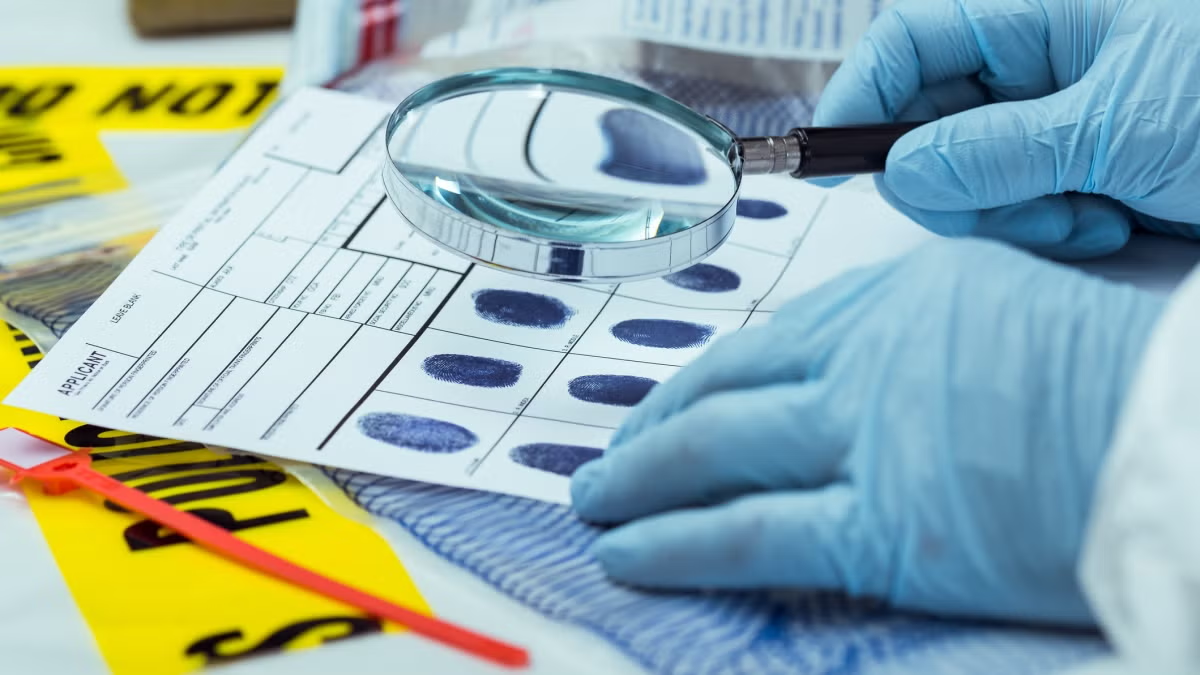
Learn about the secrets of forensic science straight from the experts
Over the next week, true crime enthusiasts will have a rare opportunity to discover the secrets of forensic science as experts share techniques for tracking down criminals.Behind Crime Scene…


